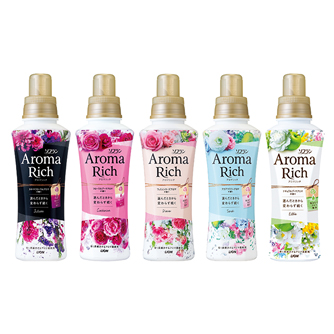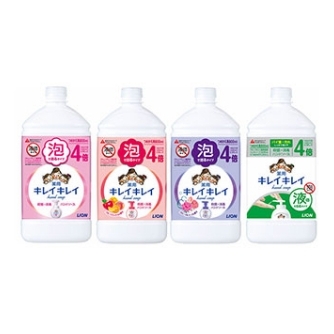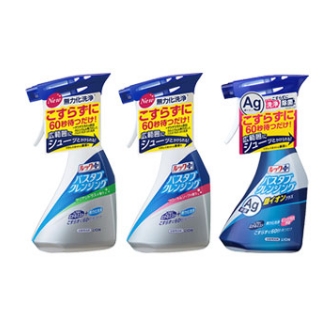Lion aims to realize a resource-circulating society, and our goal is to reduce the percentage of petrochemical-derived plastic used in products and containers to less than 70% by 2030. We have developed this packaging, focusing on the fabric softener bottle, the packaging of which uses the largest amount of plastic among our products.
We selected a kind of recycled plastic that satisfies Lion's product quality standards, by sorting it from used containers collected from within the market, and is made into pellets as a material that is easy to mold after undergoing processes such as crushing, washing, drying, and removing foreign matter.
Among various factors, particular attention was paid on securing the following properties when selecting the type of plastic: (i) colorless or white, (ii) non-toxic, i.e., containing no heavy metals, and (iii) possessing suitable fluidity* for molding as bottle packaging.
*1 Ease of flow of melted plastic. The bottle is formed by layering melted, softened plastic in the mold and making the shape by inflating it from the inside. The plastic must be suitably fluid when melted to fill the mold with the correct amount of material.
The recycled plastic we chose this time had two challenges, one being ensuring safety during customer use, and the other being reducing the odor generated in the process of melting the materials during the molding of the bottle. Because the recycled plastic is not typically used in household products, we analyzed it to ensure the material's compliance with the standards for food products and additives based on the Food Sanitation Act and thereby confirmed that the recycled plastic can be safely used in food product packaging. To enable our customers to use the product with even greater peace of mind, we used a petrochemical-derived plastic for the inner and outer layers and recycled plastic for the middle layer, ensuring quality consistent with that of conventional products (Figure 1).

In the bottle molding process, the recycled plastic generates a characteristic, strong odor when melted, creating worse conditions at the factory and making it difficult to produce in a similar operation to conventional products. We thought that the odor was caused by insufficient cleaning of the raw material plastic. Therefore, we focused on the washing process, and by the odor has been reduced to the same level as that of conventional bottles by raising the temperature of the alkaline wash during the treatment process at plastic recycling plants.

The original cap had a double-layered nozzle (outer and inner) to prevent liquid from overflowing from the mouth when the bottle is tilted, but we took on this challenge by developing a new single nozzle with an optimized shape. The amount of petrochemical-derived plastic used in the caps was reduced by approximately 35% compared to the previous version of the product by reducing the number of screw turns of the caps, making the walls thinner and optimizing the nozzle shape. This led to a reduced amount of petrochemical-derived plastic used while maintaining the same quality as before (Figure 3).

Our development work allowed us to use approximately 60% recycled plastic for the bottle body compared to the conventional design, and the use of petrochemical-derived plastic in the cap was reduced by approximately 35%, helping to reduce environmental impact. In recognition of these efforts, Lion was awarded the 47th Kinoshita Award in the research and development category from the Japan Packaging Institute. Going forward, Lion will use the plastic materials developed over the course of this research for containers in other areas. We will also consider new measures to reduce petrochemical-derived plastic and promote the recycling of products, containers and packaging, thereby contributing to the realization of a resource-circulating society.


Development of Environmentally Friendly Packaging to Realize a Resource-Circulating Society (SOFLAN AromaRich Packaging)

Developing Environmentally Friendly Containers: KireiKirei Hand Soap

Development of Containers to Provide New Options for Daily Life:The LOOK Plus Bath Cleansing Bottle
Related Information